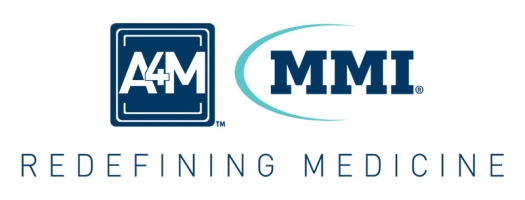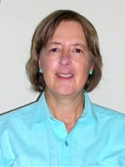a4mlogo.jpg

American Academy of Anti-Aging Medicine
The 26th Annual World Congress held in Las Vegas, NV, on December 12-15, 2018 focused on innovation and transformation in medicine. Every year, A4M holds two major conferences that present new research, innovative technologies and protocols designed to reduce chronic illness and improve longevity. In addition to many informative speakers, the venue provided booths for around 300 vendors offering a wide variety of products and information.
Each morning, highlighted speakers presented to the full congress. Afternoon breakout sections offered talks on many different subjects.
Ronald Klatz, MD, DO, and Robert Goldman, MD, PhD, DO, opened the session with an overview and welcoming remarks. Mark Penn, MD, discussed the need for greater collaboration and sharing of data and results to help transform and advance regenerative medicine. Valter Longo, PhD, reviewed intermittent fasting as one way to maximize the longevity benefits of calorie restriction without the side-effects of long-term fasting. Intermittent fasting can be achieved by traditional short fasts (1-3 days) periodically or by eating all of one’s meals over 5-6 hours, then refraining from eating until the following day. This latter approach can be easily integrated into the lifestyle of most people and can help reduce cardiovascular problems, metabolic disease and improve overall health.
Naveen Jain grew up in India and came to the United States in 1979. He became a successful business executive and entrepreneur. He gave an inspiring talk about “dreaming big.” He believes that the most significant problems with our health care system can be solved. In the best health care system, consumers will be educated about what is happening inside their bodies. Artificial Intelligence will increasingly be utilized to diagnose the root cause of illness. He noted that many illnesses ultimately result from poor gut health. His company, Viome, produces a kit that utilizes nutritional genomics to analyze a person’s microbiome and provide specific dietary recommendations for each individual.
Friday morning talks focused on mental health. Joseph Maroon, MD, spoke about neuroepigenetics and neuroplasticity. He showed how improvements in diet and exercise can stimulate neurons and synaptic growth. Peter Bongiomo, ND, referred to the increase in addiction in modern society, its effect on the brain and how to break the cycle. Thierry Herhoghe, MD, discussed using hormone therapy to improve Alzheimer’s disease and memory loss. He talked about the importance of looking at thyroid hormones, melatonin and pregnenalone in addition to the traditional hormone panel. Keynote speaker Pamela Wibble, MD, discussed the problem of burnout and high suicide rates among doctors. Her talk was at times humorous, sad and uplifting as she recounted her personal pathway out of “big box” medicine and how others can do the same.
Saturday’s presentations looked at metabolism, obesity and diabetes and their overall impact on longevity. Pamela Smith, MD, talked about insulin resistance and weight gain. Florence Comite, MD, discussed the role of precision medicine – we should be treating individuals, not averages – as we understand more about SNPs this will become easier. She cited Type 2 diabetes as a good example, since it can arise from a number of genetic variants, not just obesity. Dave Asprey talked about the role of the doctor as coach as well at the dangers of blue light and what we can do to minimize its effect on us. Peter Attia, MD presented his data on “reverse engineering” for longevity. His work examined the lives of centenarians, understanding their genetics and lifestyles, and working back to understand how we might all live longer. He defines “healthspan” as the number of years we can actively do the things we enjoy in life. A long healthspan is more desirable than a long lifespan that is filled with debilitation and physical decline.
The afternoon breakout sessions included about 70 presentations on various track topics including diet, digestive health, advances in anti-aging, technology and medicine, brain health, cardiovascular health, pediatrics, cannabis in medicine, stem cells, exosomes, peptides, reproductive health, women’s health, men’s health, photobiomodulation and integrative aesthetics.
One of best things about attending A4M is discovering new technologies and tools and the treatment protocols that emerge. This session, James Carroll discussed using Photobiomdulation and Stem Cells for Acute MI.
Photobiomodulation is a relatively new term that refers to the application of monochromatic light in healing applications. It is a general term that includes laser therapy, low level laser therapy, low light therapy and phototherapy of various kinds. Lasers have been in use for a while now, but exciting new research suggests even greater potential for these therapies. Carroll has spent much of his career as an engineer working on various light devices and is the CEO of THOR, a company that manufactures lasers and light therapy products.
Amazing new treatments are emerging from the use of this technology. Carroll reviewed some of the studies showing beneficial results for oral mucositis, diabetes, depression, cancer and cancer rehab, noise induced hearing loss, post-herpetic neuralgia, traumatic brain injury, learning difficulties and age-related macular degeneration. Those familiar with the aesthetic track offered at A4M are already aware of the many benefits achieved in skin rejuvenation.
In his presentation, Carroll noted that light therapies work because they increase ATP while reducing oxidative stress. Laser light can also release mesenchymal stem cells into the bloodstream. In a study of acute MI, laser treatments were conducted over the heart and sternum as well as the tibia. Applying light to the tibia was most effective because the lower tissue density there allows easier to access the bone marrow. One study involved 24 acute MI cases: Each patient received 3 treatments at 3hrs, then 2 days and 3 days, post MI. There was a 300-500% increase of MSCs delivered into the bloodstream. Troponin-T was 52% lower and CK accumulation at 5 days dropped 56%. These results demonstrate how a simple application of light can safely expedite recovery. Stay tuned as more applications of photobiomodulation emerge in the months and years to come.
In addition to those mentioned above, the following individuals gave presentations at this year’s congress:
James LaValle, RHh, CCN, ND; Kurt Hong, MD, PhD; Joel Kahn, MD; Felice Gersh, MD; Sebastian Brandhorst, PhD; Ben Greenfield; Marvin Singh, MD; Jill Carnahan, MD; Laia Montell, PhD; Vikram D Bakhru, MD, MBA; Steve Bellach; Andrew Wiesenthal, MD, SM; Chad Erickson; Song-young Park Jr, MD; Derrick DeSilva Jr, MD; Debby Hamilton, MD, MPH; Nathan Wong, PhD; Dan Ginsberg, MD, FACOG, FAARFM; Rafael Gonzalez, PhD, James Carroll; Joseph Raffaele, MD; Sheldon Jordan, MD; Ian White, PhD; Duncan Ross, PhD; Douglas Spiel, MD; AJ Farshchian, MD; Murray Rosenthal, DO, FAPA; Mark Tager, MD; Yan Trokel, MD; Sherry Thomas, ABAARM, ABFM, FMNM; Steven F Hotze, MD; Audrey Neff, BS; Jill Lezaic, DO; Tim Sawyer, BA; Terry Wahls, MD; Deanna Minich, PhD, FACN; Enrique Jacome, MD; Lisa Vuich, MD; Jacquel Patterson, MD; Jennifer Landa, MD, FMNM, ABAARM; Felicity Harper, PhD; Phil Han; Patrick Wayte; Trevor Cates, ND; Mark Tager, MD; Nathan Bryan, PhD; Sophia Kogan, MD; Doohi Lee, MD; Shavko Komarmytsky, PhD; Deepa Verma, MD, AIHM; Marisha Chilcott, MD; Jessica Peatross, MD; Heather Smith-Fernandez, MD; Andrew Campbell, MD; Pina LoGiudice, ND, L.Ac; Rachel Fresco, L.Ac, PhD; Barrie Tan, PhD; Daniel Stickler, MD; Ekaterina Placzek, PhD; Norman Shealy, MD, PhD; Angela DeRosa, DO, MBA, CPE; William Clearfield, DO, FAARM; Jennifer Pearlman, MD, CCFP, NCMP, FAARM, ABAARM; Deborah Matthew, MD, ABAARM; Jillian Bridget Cohen; Cory Kidd, MS, PhD; Victor Owuor; Alan Bauman, MD; John Oblong, PhD; Anil Rajani, MD.
For more information about A4M trainings and conferences go to the A4M website.


